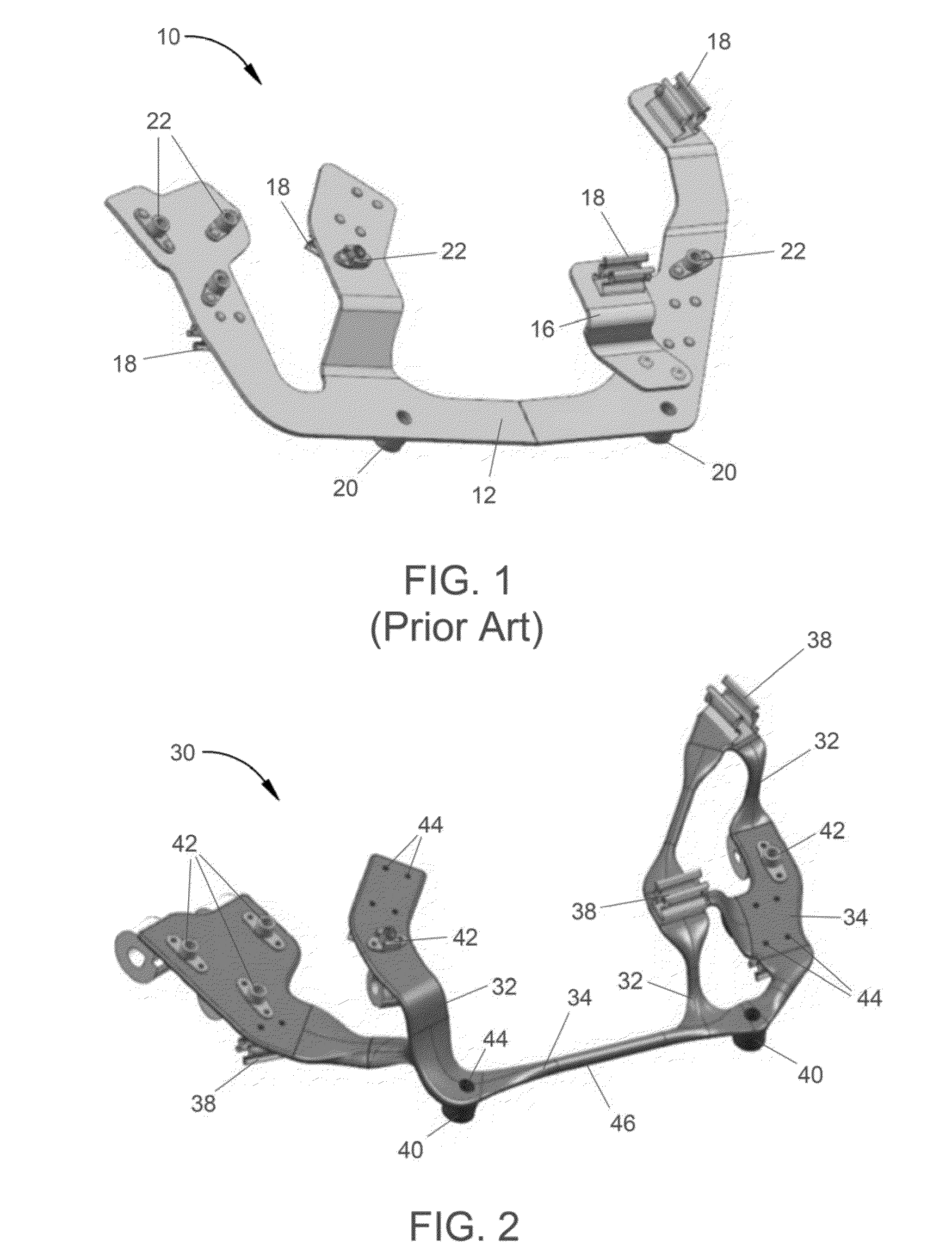Secondary structures for aircraft engines and processes therefor
a technology of aircraft engines and second structures, applied in the direction of 3d object support structures, metal-working apparatus, electrical apparatus, etc., can solve the problems of complicated ability to cost-effectively produce pmc brackets from these materials, cost prohibitive use of traditional thermoset resins to produce pmc brackets, and limited thermoplastic matrix material formation of pmcs
- Summary
- Abstract
- Description
- Claims
- Application Information
AI Technical Summary
Benefits of technology
Problems solved by technology
Method used
Image
Examples
Embodiment Construction
[0014]The present invention will be described in terms of fabricating secondary structures that, though capable of being adapted for use in a wide range of applications, are particularly well suited as brackets whose primary purpose is to support or secure various components of aircraft engines, for example, components outside the core engine of a high-bypass gas turbine engine, but within the nacelle or surrounding the fan section of such an engine. Particularly notable examples of secondary structures include brackets that are mounted on the exterior of the fan case that support other parts such as tubes, hoses, manifolds, wiring harnesses, and other components such as the oil tank, FADEC (full authority digital electronic control), etc. However, various other secondary structures and various other applications to which the present invention could be applied are also within the scope of the invention.
[0015]The present invention provides processes by which secondary structures capa...
PUM
| Property | Measurement | Unit |
|---|---|---|
| thickness | aaaaa | aaaaa |
| lengths | aaaaa | aaaaa |
| secondary structure | aaaaa | aaaaa |
Abstract
Description
Claims
Application Information
 Login to View More
Login to View More - R&D
- Intellectual Property
- Life Sciences
- Materials
- Tech Scout
- Unparalleled Data Quality
- Higher Quality Content
- 60% Fewer Hallucinations
Browse by: Latest US Patents, China's latest patents, Technical Efficacy Thesaurus, Application Domain, Technology Topic, Popular Technical Reports.
© 2025 PatSnap. All rights reserved.Legal|Privacy policy|Modern Slavery Act Transparency Statement|Sitemap|About US| Contact US: help@patsnap.com


